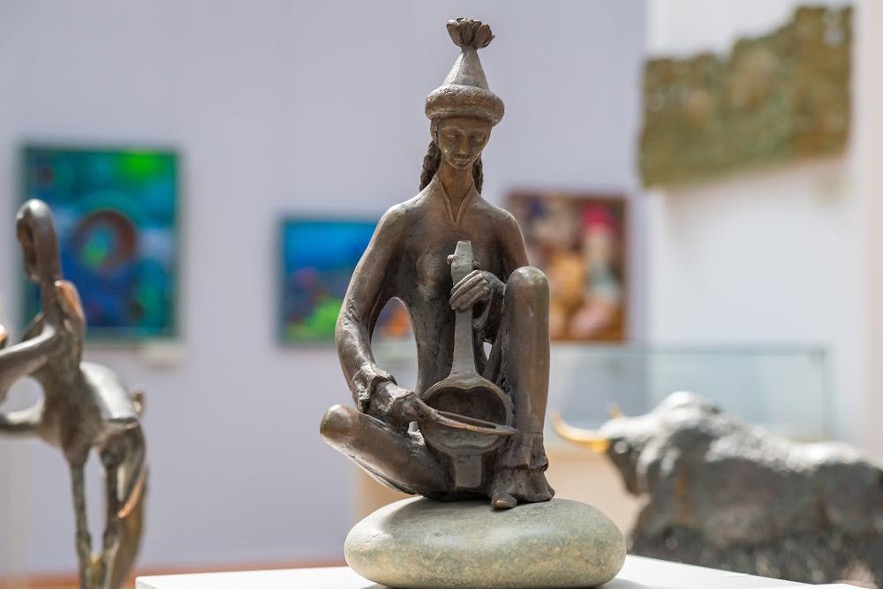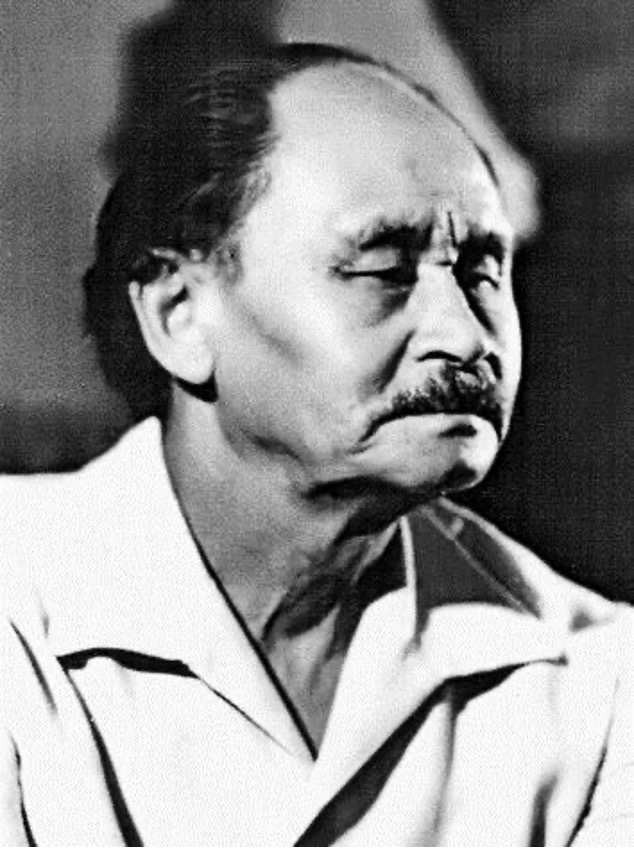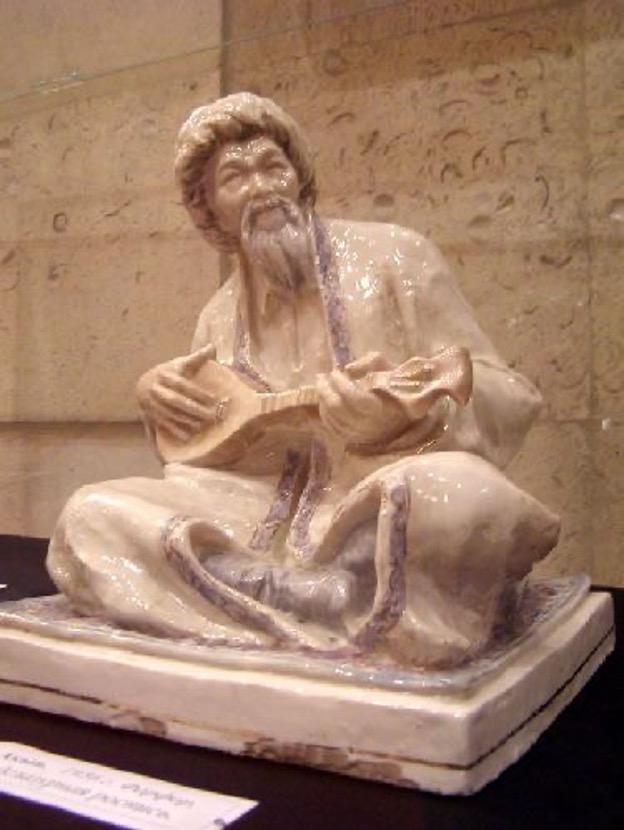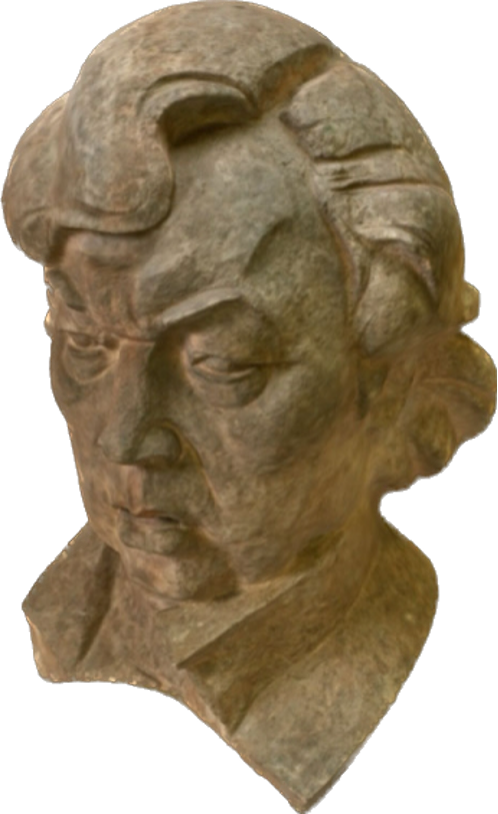The first information about the activities of professional sculptors in Kazakhstan dates back to 1939. At this time, a competition is being held to create a monument to the great Uzbek poet Alisher Navoi. The participant was a graduate of the Baron A. Stieglitz Technical Drawing School in Petrograd, a native of Vernon, sculptor A.S. Ponomarev, who returned to Alma-Ata in 1920 and later organized art workshops for the design of the city. Ponomarev is the author of the first sculptural portraits of Kazakh enlighteners of the twentieth century Chokan Valikhanov, Abai Kunanbayev, Ibray Altynsarin. These works were executed in the best traditions of classical realistic art, which became canonical for such works of an official nature.

In 1938, sculptor V. Kroshin, who graduated from the Academy of Arts in Leningrad, came to Kazakhstan. Practically nothing is known about the period of his life in Kazakhstan, and only one work "Portrait of General I.V. Panfilov" in 1948, which is in the collection of the A. Kasteev State Museum of Art of the Republic of Kazakhstan, remains from his creative heritage. In the 1940s, exhibitions were held in Kazakhstan with the participation of sculptors, which indicate a growing interest in the art of plastics, professional artists from the fields of X. Shamsutdinov, H. Krymshamkhalov, A. Chikin, Yu. Hummel and many others.
During the war, famous Soviet sculptors I. Tchaikovsky, O. Kudryavtseva, I. Ryk, L. Muravina, V. Bogatyrev and B.I. Urmanche were evacuated to Kazakhstan from Leningrad. Their work had a significant impact on the formation of Kazakh sculpture, already at the initial stage setting a high bar for its professional development. At the same time, the lack of production conditions made it impossible to fully carry out the few orders and creative works in the material, therefore, the surviving works of this time were made mainly in plaster.
The consistent development of Kazakh plastics begins in the 50s. The first professional Kazakh sculptor was H. Nauryzbayev, who graduated from the Kharkov Art Institute in 1951. He created many works that were included in the golden fund of fine arts of Kazakhstan. The stage started by Nauryzbayev's work can be defined as the time of creating a heroic national image in professional sculpture of Kazakhstan.

Nauryzbayev is the author of more than 300 works, including the famous monuments to Abai and Chokan Valikhanov in Almaty, these are the first monumental and sculptural works made by the Kazakh artist.
In these works, the sculptor completely departs from the generally accepted solution of official portraits in the form of busts at that time, creating monumental monuments deep in psychological imagery and expressive in plastic completeness, which entered the history of Kazakh art as outstanding works of art. Nauryzbayev's chamber portraits, which have preserved the best traditions of Russian-European classical sculpture, are distinguished by a special poetic intonation, in each case revealing either the lyrical or dramatic content of the image. "Kurmangazy" (1958), "Portrait of the poetess M. Khakimzhanova" (1964) - all these and many other portraits were created by the sculptor from nature.
In the mid-50s, P.D. Usachev, a graduate of the sculpture department of the V. Mukhina Leningrad Higher School of Art and Industry, entered the art of Kazakhstan. His talent manifested itself, first of all, in a special lyrical and poetic intonation, which he endowed with his works. In 1958, at an exhibition held as part of the Decade of Culture and art of Kazakhstan in Moscow, his first sculptural portraits were exhibited, opening a gallery of Kazakh female images - "Ballerina" (1958), "Student" (1959).
During these years, other sculptors began their creative activities in Kazakhstan: N. Zhuravlev in his works "On the Rink" (1959), "The Herd Boy" (1958) subtly and characteristically conveys lively moods and feelings. By the end of the 50s, the sculpture of Kazakhstan was becoming more diverse in genres and thematic focus.
Artists work not only in portrait, but also turn to genre and decorative monumental sculpture, and show a deep interest in the modern theme.
Thematic and genre sculpture opens the work of A. Isaev, who worked in small-scale machine-tool plastics "Stalevar" (1958). In 1957, the first exhibition of sculpture of Kazakhstan was held in Alma-Ata, and although the exposition did not have a specific concept, it demonstrated and summed up the almost 10-year development of Kazakh plastics.
Among its participants were representatives of the older generation of sculptors - Ya. Kuchis, I. Nikolishin, 3. Beregovaya and H. Nauryzbayev. Decorative sculptures appeared in the exposition, the compositions were distinguished by the multilayered plot content, an abundance of details, but with all the variety of author's handwriting, these works were united by the desire to identify and develop the national content of selected topics.
The only master of fine plastics during this period was 3. Beregovaya, who worked with majolica, biscuit, porcelain. She created elegant statuettes in the style of Soviet porcelain of the 50s, but introduced local Kazakh themes into them. The elegance of color and shape were organically combined in her works with the poetry of images of Kazakh folklore, "Kyz-Zhibek with swans" (1962) or the romance of everyday work of ordinary people, perceived by small hymns dedicated to the joys of simple life "A girl with a donkey" (1959), "Birdwoman" (1959).

A special place in the general development of the art of Kazakhstan in the late 50s is occupied by sculptural portraits of I.Y. Itkind, combining fantasy allegories and reality. The sculptor did not ask about the directions in art, the plastic solution in each case depended solely on the material and the artist's own vision - "The Laughing Old Man" (1957), "The Sage" (1958).
In the 50s, the creative path of B.A. Tulekov began. The works created by the artist speak about the author's search for compositional expressiveness through dynamics or statics in the movements of figures - "The Hunter with the Golden Eagle" (1958), "Memory of War Heroines" (1975). Over the years, B. Tulekov turned to the portrait genre, striving to create deep and ambiguous images "Portrait of Symphony Orchestra conductor Fuat Mansurov" (1960), "Portrait of Twice Hero of Socialist Labor Chaban Kuanyshbayev" (1969). These works by Tulekov were executed in the best traditions of Soviet plastic art.
The content of the sculpture of the 60s was very different from the themes of the post-war years. The method of image has also changed, and the development of sculptural forms is becoming more diverse. The whole creative atmosphere of that time contributed to the manifestation of the talents of the artists. The works of easel and decorative plastics are distinguished by the search for new expressive means. This period is associated with the beginning of the creative activity of the next generation of Kazakhstani sculptors - E. Mergenov, T. Dosmagambetov, V. Rakhmanov, O. Prokopyeva, E. Sergebaeva, L. Kolotina, M. Rappoport, M. Ainekov and many others.
One of the bright leaders of this time is E. Mergenov, whose creative career began in 1961. Mergenov's works transcend the national theme itself, they are already becoming a universal heritage, reflecting the dialectic of modern human and social development, the constant struggle, confrontation between matter and spirit, between personal positions and the laws of globalization. The composition "Meeting" (1986-1988) is a kind of manifesto of his searches in the 80s, the artist's reflection on the fate of national traditions in common integral processes.
In the early works of T. Dosmagambetov, O. Prokopieva, E. Sergebaev, M. Ainekov, at first there was a sense of narrative and excessive adherence to the methods of the academic school, in the process of further evolution of creativity, each of them finds his way in the realization of plastic ideas. Already in the early works of O. Prokopyeva, first presented at exhibitions in Almaty in the late 60s, a special feature of her artistic vision is read - a poetic interpretation of the simplest phenomena of life - "Youth" (1968), "Kyz Zhibek" (1970). Later, this tendency develops into a desire to maximize the essence of phenomena through the acute specificity of the created image.
So, one of the best works of the artist - a composite portrait of the People's Artist of the USSR E. Serkebaev in the role of Figaro (1976) - carries the vivid expressiveness of an almost baroque theatrical artistic gesture. The development of a composite portrait is one of the striking qualities of the formation of Kazakh plasticity in the late 60s and 70s. T. Dosmagambetov creates a portrait of Olzhas Suleimenov, representing the poet as a people's tribune, whose word carries power and truth. The gesture of the hand, as if sculpting a poetic word, emphasizes the energetic tension of the created image. Sergebaev, in his work dedicated to the artist S. Aitbaev, uses the method of narration, creating a genre composition from different parts: the figure of the artist, placed in front of an easel, seemed to be able to move in space.

The sculptor combined the professionalism of the artist and the intuition of the national master. The chamber sculpture of D. Aldekov, who develops the traditions of Central Asian clay toys, rethinking them in a new temporal context, is close to Akhmetov's works in terms of plastic searches.
During this period, sculptors B. Abishev, K. Kakimov, and many others worked. The period of the 70s and 80s in sculpture in Kazakhstan is marked as a stage of creative maturity, sculptors actively experiment, find out in practice the possibilities of spatial relationships of plastic volume with the environment, the language of sculpture is enriched by a variety of plastic intonations.
The next generation of Kazakhstani sculptors, who entered the art arena in the late 80s, has a vision of the mass of materials that is almost different from that of classical plastics. They strive for its greatest "lightness", literally making up the internal structure of the image, turned into a plastic ornament. Artists prefer to work in different materials, but mainly in bronze, which presents great opportunities for plastic experiments - these are E.M. Kazaryan, D.B. Tolekov, A.N. Yesenbayev, N.A. Dalbai, M. Zhunisbayev and many others. Images created by the sculptor M. Zhunisbaev, personify the complex rebirth of the concrete-real into the fantastically philosophical - "Mirage" (2000). In E. Ghazaryan's works, sculpture loses weight and volume, turning into bronze symbolic hieroglyphs, and his ceramic objects pass the scales of intimacy inherent in this material, becoming some kind of natural objects like a mountain, a tree or an animal.
A.N. Yesenbayev maximizes the range of his creativity. From the compositions of the decorative and modernist character of the early stage of "The Ancient Hunter" (1988), he moves on to works that seem to exist outside of time and space, but carry a high universal meaning - as a rule, these are works related to Christian themes.
Modern artists in their works take more into account the need to enter the space of the environment. The sculpture becomes warmer, more spiritual, freer. Losing mass and weight, it can become a decorative easel, or almost a jewelry object, hang on a wall or in the air, turn into a graphic symbol or sign, thereby completely violating its own nature.
The works of Sh. In recent years, Tolesha has literally acquired transparency and weightlessness - his "Caravan" (2013) is made of narrow glass strips and acquires the properties of a mirage in the light, showing its special plasticity when the luminous flux changes.
Another interesting aspect in the work of artists of recent years is the active transition from static to movement, which can be observed in the works of E. Kazaryan, A. Mergenov, G. Akhmetov. Thus, in A. Mergenov's compositions "Jailau" (2008), "Zher - ana" (2010), the dynamic energy of moving plastic masses is built, proceeding from the desire to visualize the spiritual foundations of human mentality, capable of manifesting philosophical worldviews.
Source: 5-volume edition of "Kazakh oneri" ("Art of Kazakhstan")




